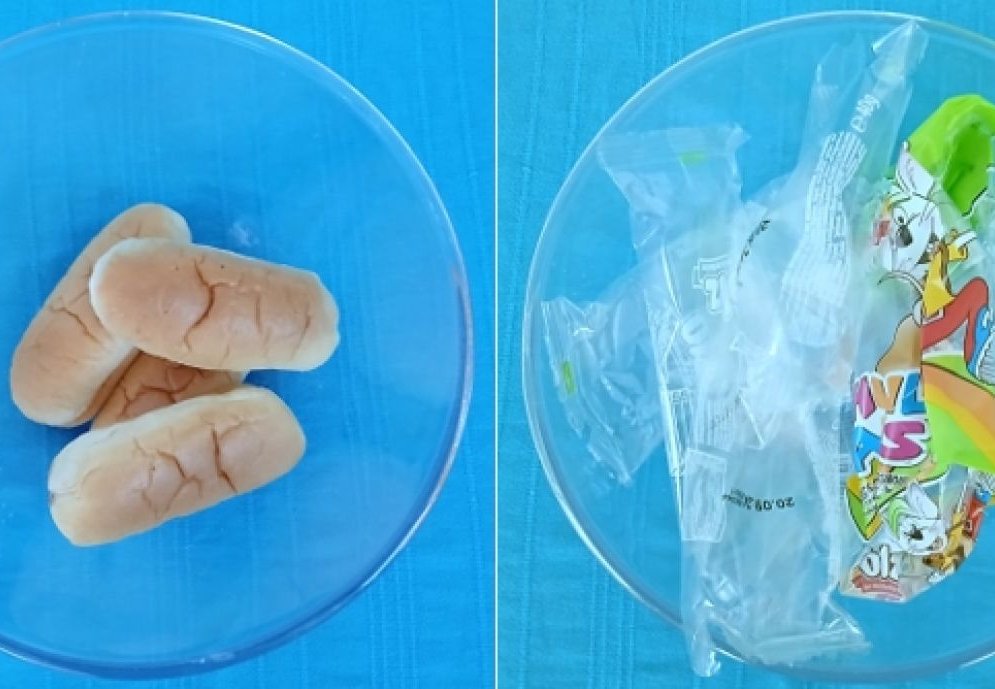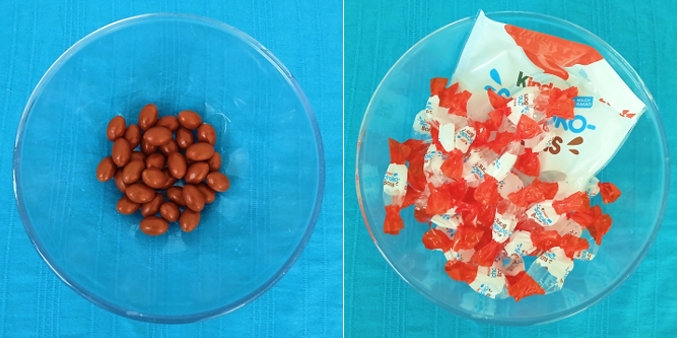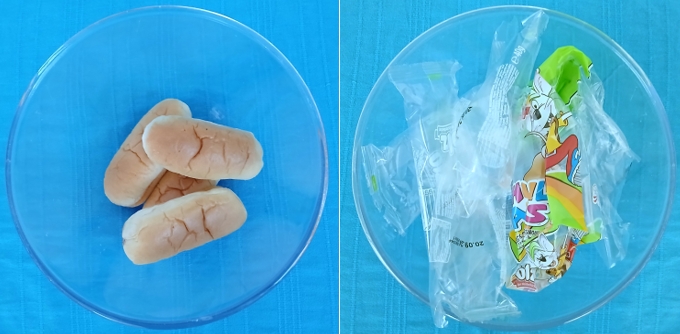

Plastic packaging experiment
Plastic waste reduction
Project summary
A practical activity to compare the amount of packaging to the amount of chocolate or snack.
Learning outcome
Students will
- become aware of some of the effects of consumption decisions.
- realise that through food choices, we can start to reduce waste.
- set goals to produce less plastic waste and dispose of it appropriately.
Time required
1 hour
Tools or equipment
- 2 bowls of the same size
- 1 pack of packaged snacks (e.g., 1 bag of chocolate sweets or 1 bag of packaged snack rolls)
Additional material:
Zero Waste Kindergarten – Handbook in German
Activity description
In this activity, issues around packaging are explored. The activity is suitabele for pre-school and primary school.
1. Unpacking purchased snacks.
- Each pupil gets a sweet or snack roll and unpack it.
- The packaging goes into one bowl, and the contents into the second.
- Observation: The pack contains relatively little chocolate or snack, but a large amount of plastic packaging.
2. Take a photo of the result.


3. Discuss the result.
- What is the problem with plastic waste?
- Is the pack size deceptive because there is so much packaging inside?
- What is the packaging for?
- What unpacked alternatives are there?
- How can we reduce our plastic waste?
Then, eat the contents and dispose of the rubbish properly.
4. Consolidation of learning.
Record the findings from the experiment on a poster.
Additional activities:
- Collage from pictures/drawings: Present snacks that are packaged and snacks that are unpackaged. We can find that unpackaged food is often healthier and fresher (such as fruit, vegetables, bread, bread rolls).
- Store check: What is packaged, and what is unpackaged? Where can we buy unpacked food (market, special shops,...)?
Tips how to implement the topic to school curriculum
Nature: environmental protection and sustainability, consumer education
Maths: concepts of size, measuring activities, presenting data in a structured way
Language: listening with understanding, discussing, formulating arguments
Art: collage, presentation
